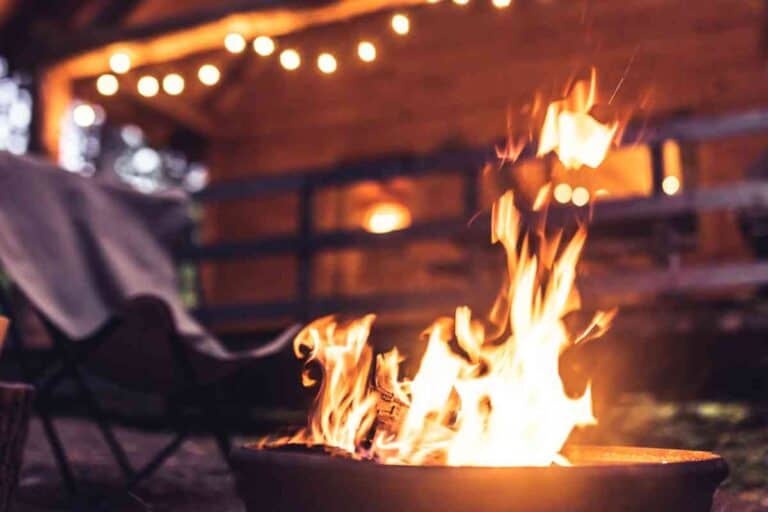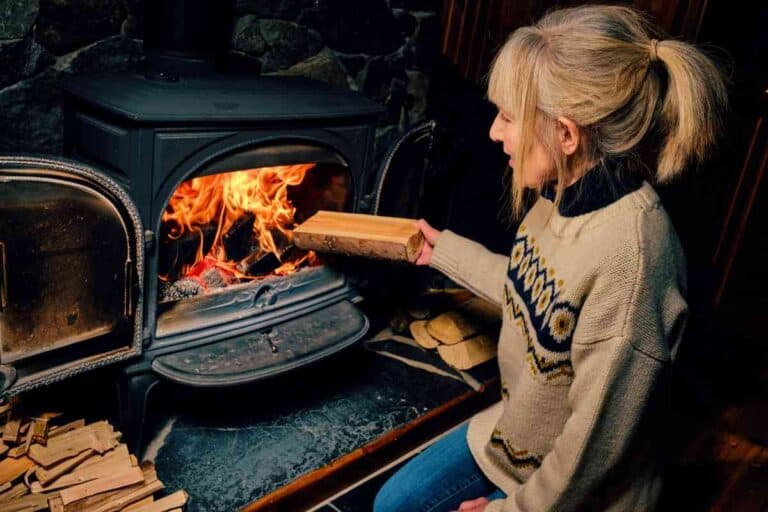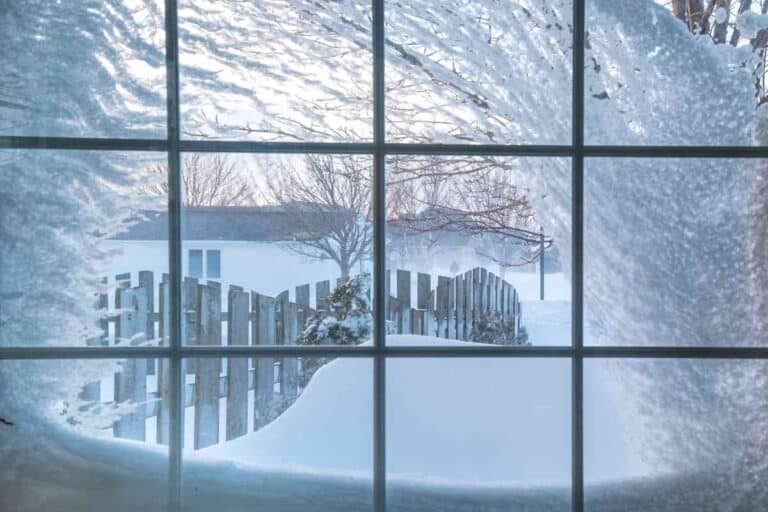Log Cabin Types: A Comprehensive Guide to Choosing the Right One for You
If you’re in the market for a log cabin, it’s important to know that not all log cabins are created equal. There are several types of log cabins, each with its own unique characteristics and benefits. Understanding the different types of log cabins can help you make an informed decision when choosing the right one for you.
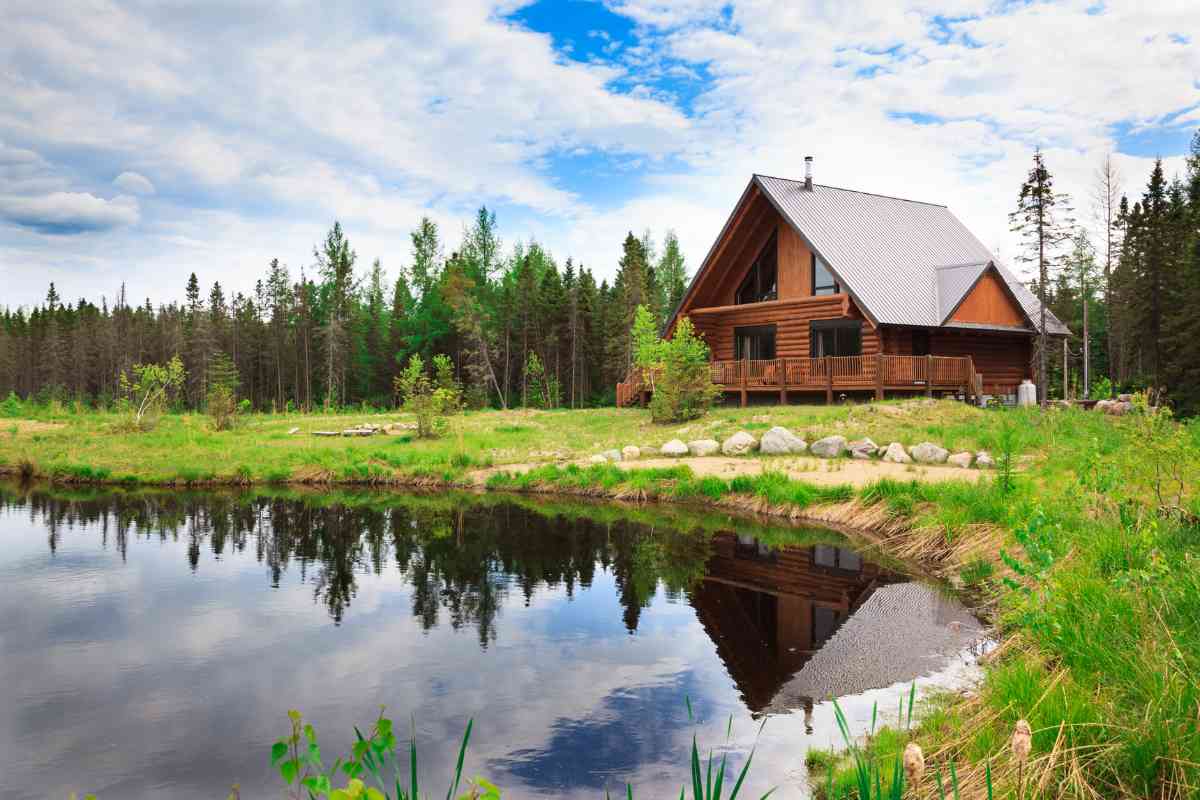
What types of log cabins are there?
One of the most common types of log cabins is the traditional or rustic log cabin. These cabins are built using logs that are left in their natural state, with the bark still intact. They are often small, cozy, and perfect for a weekend getaway or a hunting trip.
Rustic log cabins are typically built in remote areas, away from the hustle and bustle of city life. They offer a peaceful retreat where you can relax and unwind, surrounded by nature.
Another type of log cabin is the modern log cabin . These cabins are built using logs that have been milled to a specific size and shape. They are often larger and more luxurious than rustic log cabins, with modern amenities like electricity, plumbing, and heating.
Modern log cabins are perfect for those who want a little more comfort and convenience while still enjoying the beauty and charm of a log cabin. They can be used as a primary residence or a vacation home, and are often located in scenic areas with stunning views.
Types of Log Cabins
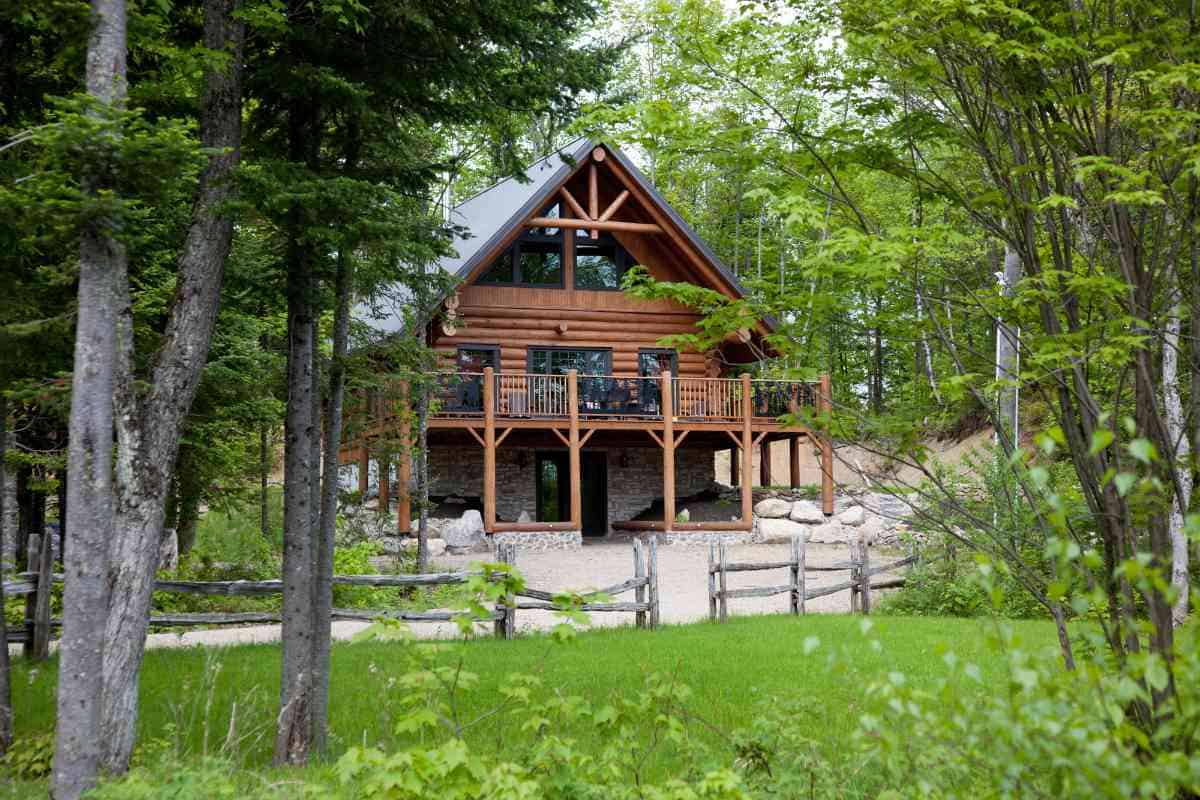
When it comes to log cabins, there are several different types to choose from. Each type has its own unique characteristics, which can affect the overall look and feel of the cabin.
Full Scribe Log Home
A full scribe log home is a type of log cabin that is made from whole logs. These logs are carefully scribed and fitted together, so that the cabin is completely sealed from the elements.
This type of log home is one of the oldest and most traditional types of log cabins. Full scribe log homes are known for their rustic charm and natural beauty.
Post and Beam Log Home
A post and beam log home is a type of log cabin that is made from a combination of whole logs and timber framing.
This type of log home is known for its strength and durability. Post and beam log homes are often used in areas that experience extreme weather conditions, such as heavy snowfall or high winds.
Milled Log Cabin
A milled log cabin is a type of log cabin that is made from logs that have been cut to a specific shape and size. This type of log home is known for its precision and uniformity. Milled log cabins are often used in areas where building codes require a specific type of log home.
Hybrid Log Home
A hybrid log home is a type of log cabin that combines two or more types of log home construction.
This type of log home is often used to create a unique look or to take advantage of the benefits of different types of log home construction. Hybrid log homes can be made from a combination of whole logs, timber framing, and milled logs.
Modular Log Cabin
A modular log cabin is a type of log cabin that is built in sections, or modules. These modules are then transported to the building site and assembled on site. This type of log home is known for its ease of construction and affordability. Modular log cabins are often used in areas where building codes require a specific type of log home.
When choosing a log home style, it is important to consider the structural types of log homes. There are three main types: square and rectangular type, round log type, and Swedish cope type. Each type has its own unique characteristics, which can affect the overall look and feel of the cabin.
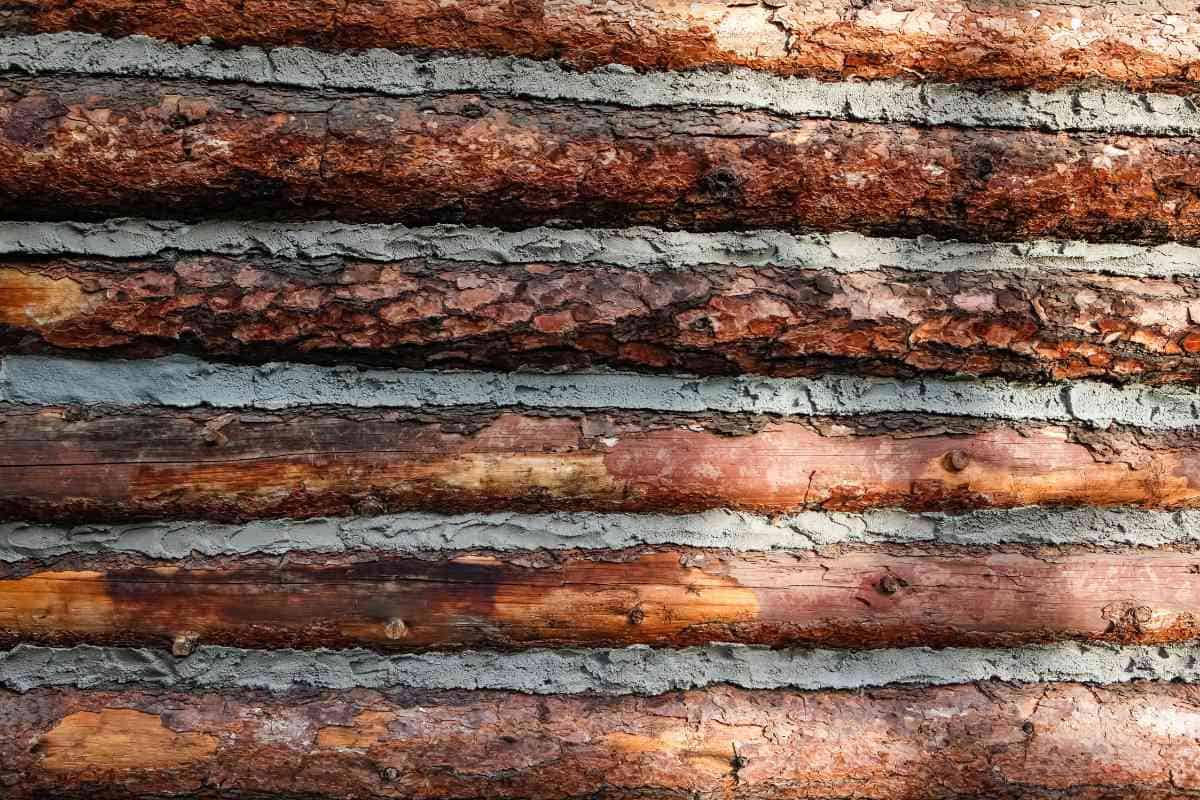
| Structural Type | Characteristics |
| Square and Rectangular Type | Logs are cut into square or rectangular shapes and stacked on top of each other. This type of log home is known for its clean lines and modern look. |
| Round Log Type | Logs are left in their natural, round shape. This type of log home is known for its rustic charm and natural beauty. |
| Swedish Cope Type | Logs are cut with a special groove that allows them to fit together tightly. This type of log home is known for its strength and durability. |
Construction Techniques
When it comes to log cabin construction, there are several techniques that can be used. Each technique has its own unique characteristics that can affect the overall look and feel of the cabin. In this section, we will explore some of the most common construction techniques used in log cabin building.
Handcrafting
Handcrafting is the oldest and most traditional method of log cabin construction. With this technique, logs are hand-selected, hand-peeled, and hand-notched to fit together. This method requires a high degree of skill and precision, as each log must be carefully measured and cut to fit perfectly with the others.
Handcrafted log cabins are known for their rustic charm and natural beauty. The logs used in handcrafted cabins retain their natural shape, which gives the cabin a unique, organic look. However, this method of construction can be time-consuming and expensive, as it requires a great deal of skill and labor.
Milling
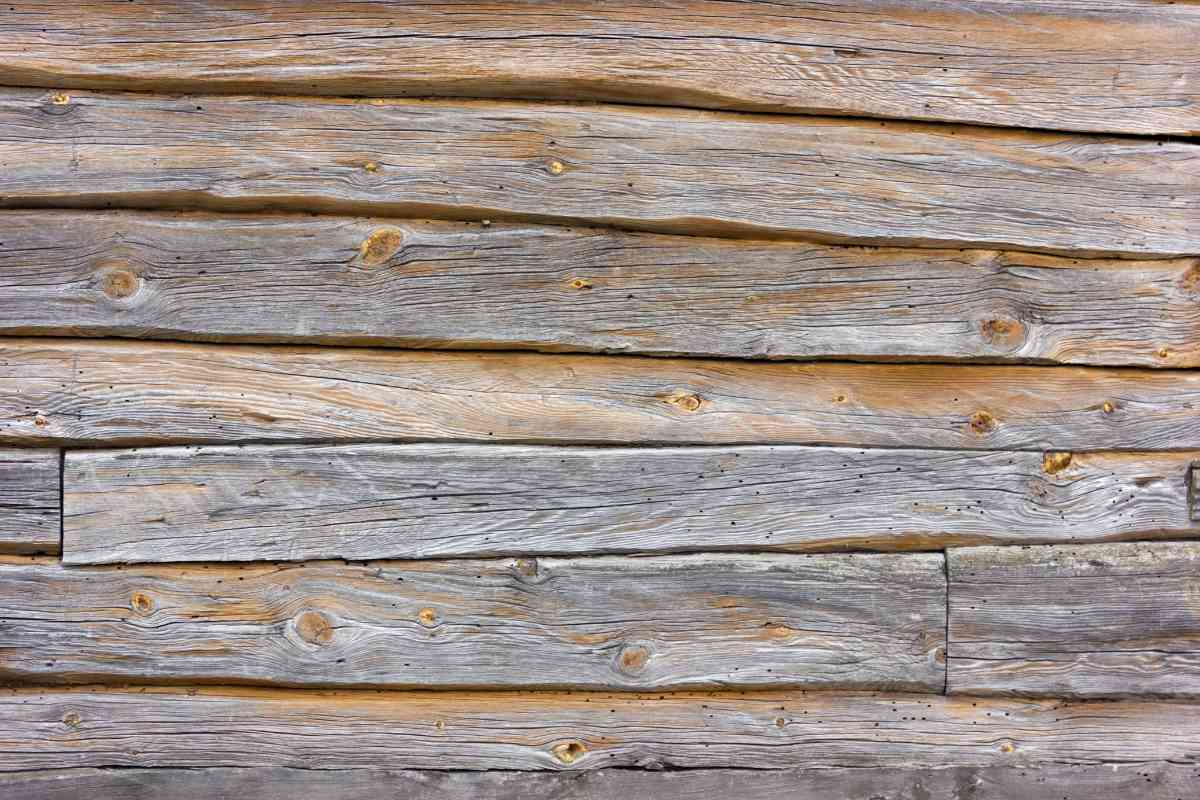
Milling is a more modern method of log cabin construction that involves using a sawmill to cut the logs into uniform shapes and sizes. This method is faster and more efficient than handcrafting, and it produces logs that are easier to work with.
Milled log cabins have a more uniform appearance than handcrafted cabins, which some people find more appealing. However, the logs used in milled cabins are often less natural-looking than those used in handcrafted cabins.
Notching
Notching is the process of cutting a groove into the logs so that they can fit together tightly. There are several different types of notching techniques that can be used in log cabin construction, including saddle notching, dovetail notching, and butt-and-pass notching.
Saddle notching is the most common type of notching used in log cabin construction. With this technique, a half-moon shape is cut into the bottom of each log, which allows it to fit snugly onto the log below it.
Dovetail notching is a more complex notching technique that requires a high degree of skill and precision. With this technique, the logs are cut so that they fit together in a dovetail shape, which creates a tight, interlocking joint.
Butt-and-pass notching is a simpler notching technique that involves cutting the logs so that they pass each other at the corners. This technique is often used in more rustic log cabins.
Dovetailing
Dovetailing is a type of notching that involves cutting the logs so that they fit together in a dovetail shape. This technique creates a tight, interlocking joint that is both air and watertight.
Dovetailing is a more complex technique than saddle notching, and it requires a high degree of skill and precision. However, the end result is a log cabin that is both beautiful and functional.
| Technique | Characteristics |
| Handcrafting | Oldest and most traditional method, requires a high degree of skill and precision, time-consuming and expensive |
| Milling | More modern method, faster and more efficient, produces logs that are easier to work with |
| Notching | Process of cutting a groove into the logs so that they can fit together tightly, several different types of notching techniques |
| Dovetailing | Type of notching that creates a tight, interlocking joint that is both air and watertight, more complex technique than saddle notching |
There are several different construction techniques that can be used in log cabin building. Each technique has its own unique characteristics, and the choice of technique will depend on the builder’s preferences and needs. Whether you choose handcrafting, milling, notching, or dovetailing, you can be sure that your log cabin will be a beautiful and functional space that you can enjoy for years to come.
Materials Used in Log Cabin Construction
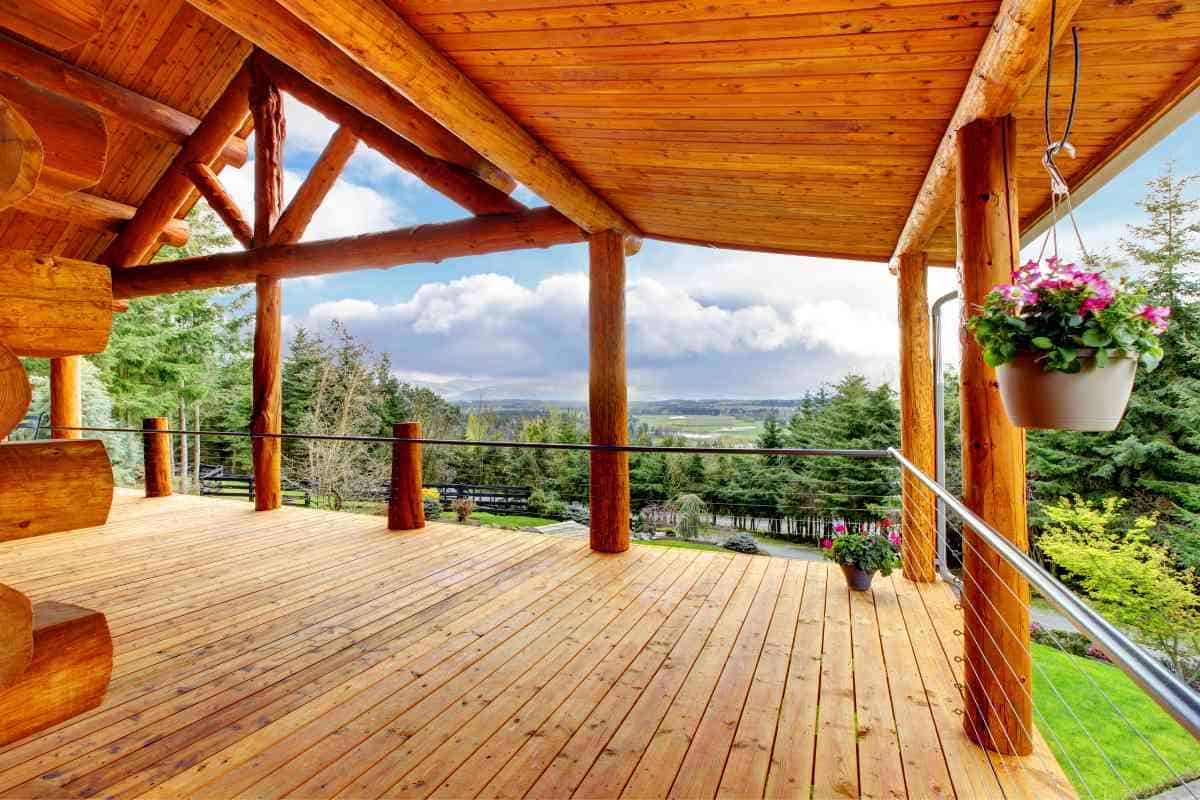
The materials used are crucial to the durability and longevity of the structure. Here are the most common materials used in log cabin construction:
Logs
Logs are the primary building material for log cabins. They can be made from different types of wood, including pine, cedar, and spruce. The most common types of logs used in log cabins are round logs, handcrafted logs, milled logs, half logs, and quarter logs . Each type of log has its own unique characteristics and advantages.
Timber
Timber is used for the framing of the log cabin, including the roof, walls, and floor. It is typically made from softwood species such as pine, fir, and spruce. Timber is cut into specific sizes and shapes to fit the structure of the log cabin.
Siding
Log siding is a popular alternative to traditional logs. It is made from wood and gives the appearance of a log cabin but is easier to install and maintain. Log veneer and log-look siding are also available options.
Mortar
Mortar is used to hold the logs together and create a seal between them. It is typically made from a mixture of sand, lime, and cement. Mortar is important for preventing air and water from penetrating the log cabin.
Chinking

Chinking is used in between the logs to fill any gaps and create a seal. It is typically made from a mixture of cement, sand, and other materials. Chinking also helps to insulate the log cabin and prevent air and water from penetrating.
When choosing the materials for your log cabin, it is important to consider the climate and weather conditions in your area. You want to choose materials that will withstand the elements and last for many years. Using high-quality materials and having a skilled builder is key to ensuring that your log cabin is built to last.
| Material | Description |
| Logs | Primary building material for log cabins. Made from different types of wood including pine, cedar, and spruce. |
| Timber | Used for the framing of the log cabin, including the roof, walls, and floor. Typically made from softwood species such as pine, fir, and spruce. |
| Siding | Log siding is a popular alternative to traditional logs. Made from wood and gives the appearance of a log cabin but is easier to install and maintain. |
| Mortar | Used to hold the logs together and create a seal between them. Typically made from a mixture of sand, lime, and cement. |
| Chinking | Used in between the logs to fill any gaps and create a seal. Typically made from a mixture of cement, sand, and other materials. |
Common Wood Types for Log Cabins
Not only does the type of wood you choose affect the overall look and feel of your cabin, but it also determines the strength and durability of your structure. In North America, there are many different wood species to choose from, but two of the most common are pine and Douglas fir.
Pine
Pine is a popular choice for log cabins due to its affordability and availability. It is a softwood that is easy to work with and has a straight grain, making it ideal for log construction. Pine also has a light color that can be easily stained or painted to match your desired aesthetic.
However, pine does have some drawbacks. It is not as strong as other wood species and can be prone to knots, which can weaken the wood over time. Additionally, pine is susceptible to decay and insect damage, so proper maintenance is necessary to ensure the longevity of your log cabin.
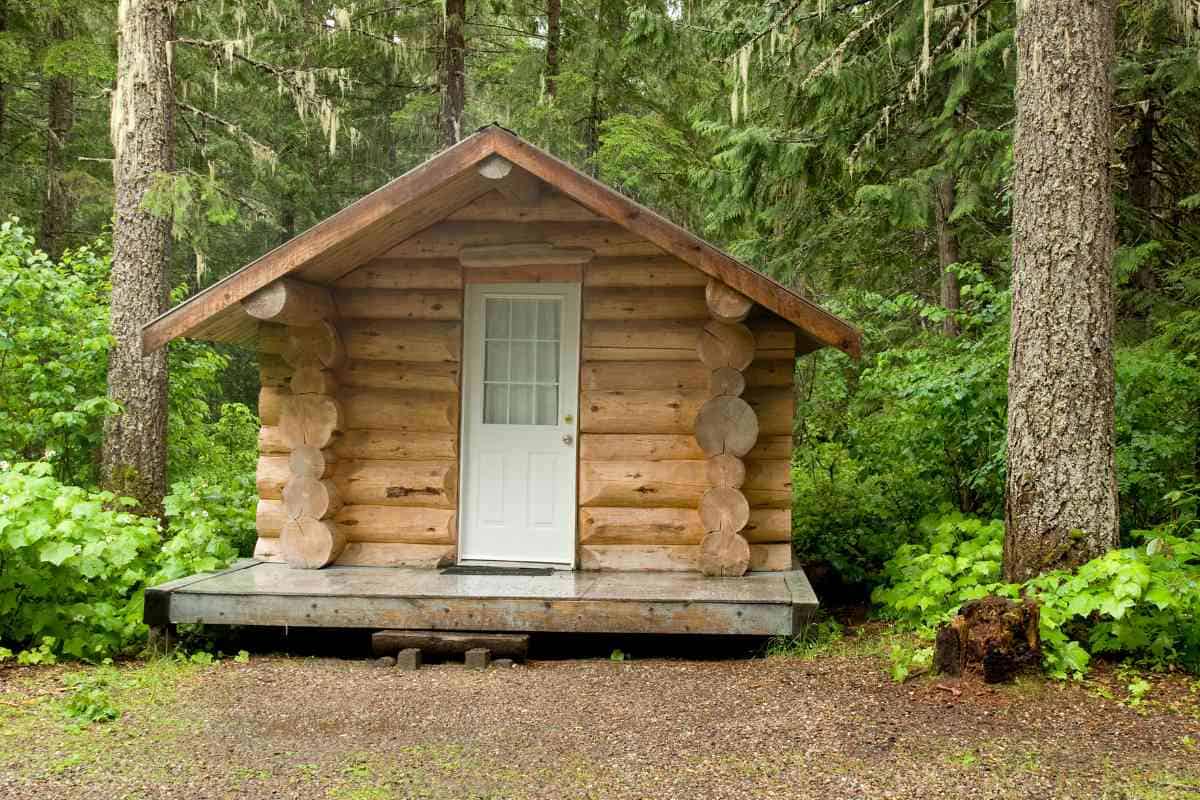
Douglas Fir
Douglas fir is another popular wood species for log cabins. It is a strong softwood that is known for its durability and resistance to decay and insect damage. Douglas fir also has a beautiful reddish-brown color that can add warmth and character to your log cabin.
One of the key benefits of Douglas fir is its strength. It is a dense wood that is less prone to knots than pine, making it a more structurally sound choice for log construction. However, this strength also comes with a higher price tag than pine.
When choosing between pine and Douglas fir for your log cabin, it’s important to consider your budget, desired aesthetic, and the level of maintenance you are willing to commit to. Both wood types have their pros and cons, so it’s important to weigh them carefully before making a decision.
| Wood Type | Strength | Heartwood Color | Sapwood Color | Prone to Knots | Resistance to Decay | Price |
| Pine | Less | Light | Light | Yes | Susceptible | Affordable |
| Douglas Fir | More | Reddish-Brown | White | No | Resistant | Expensive |
Maintenance and Durability of Log Cabins
Log cabins are a popular choice for those looking for a rustic, cozy home. However, they require regular maintenance to ensure their durability and longevity. In this section, we will discuss some of the key factors that affect the maintenance and durability of log cabins.
Insulation
Log cabins are known for their insulation properties, but this can vary depending on the type of logs used and how they are installed. Proper insulation is essential to maintain a comfortable temperature inside the cabin and prevent energy loss. It is recommended to use logs with a high R-value, which measures the insulation’s effectiveness. Additionally, sealing gaps between logs with caulking or chinking can further improve insulation.
Shrinkage
Log cabins are known for their insulation properties, but this can vary depending on the type of logs used and how they are installed. Proper insulation is essential to maintain a comfortable temperature inside the cabin and prevent energy loss. It is recommended to use logs with a high R-value, which measures the insulation’s effectiveness. Additionally, sealing gaps between logs with caulking or chinking can further improve insulation.
Rot and Infestation
Log cabins are susceptible to rot and infestation, significantly impacting their durability. Regular inspections and maintenance can help prevent these issues. It’s recommended to use logs resistant to rot and insects, such as cedar or redwood. Furthermore, treating the logs with a preservative can further guard against rot and infestation.
| Factor | Maintenance Tips |
| Insulation | Use logs with high R-value and seal gaps between logs with caulking or chinking |
| Shrinkage | Fill gaps between logs with a flexible material |
| Rot and Infestation | Use logs that are resistant to rot and insects and treat logs with a preservative |
Overall, log cabins demand regular maintenance to ensure their durability and longevity. By addressing proper insulation, managing shrinkage, and preventing rot and infestation, you can ensure a low-maintenance log cabin for years to come.
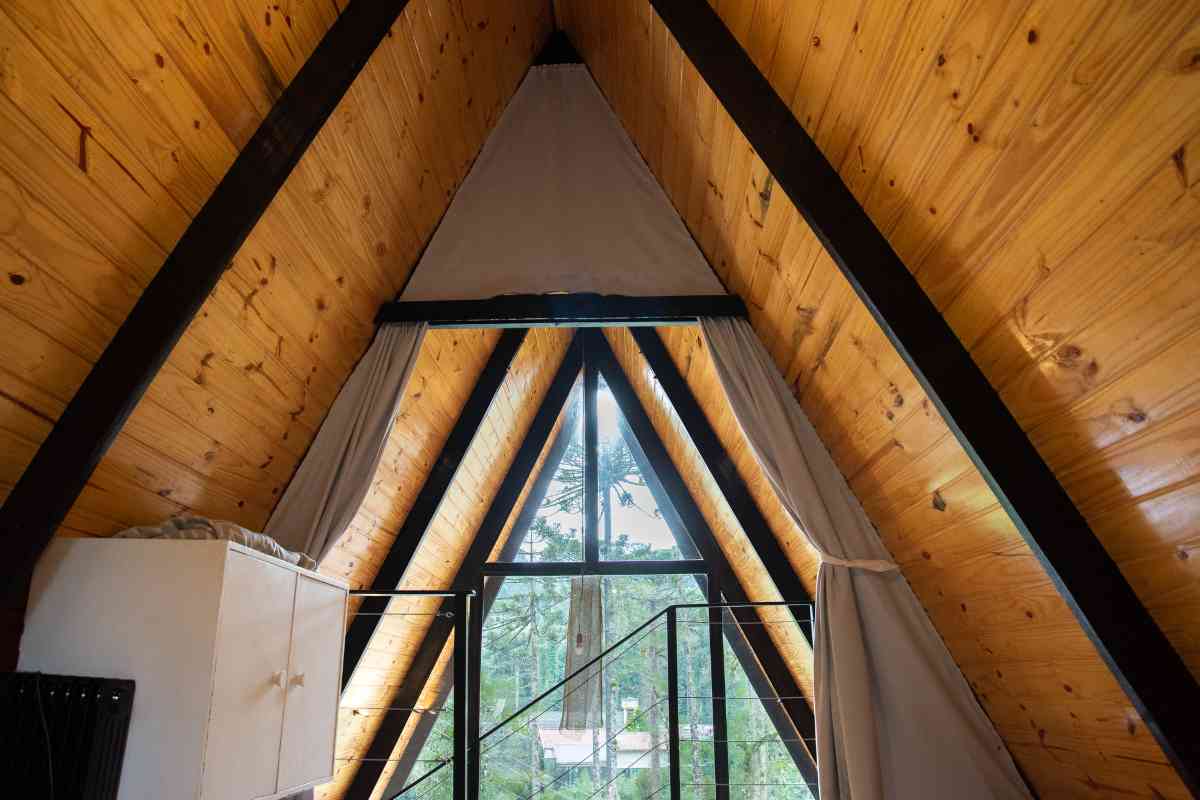
Cost Considerations for Log Cabins
While log cabins can be a great investment, offering a cozy and rustic living space, they can also be quite expensive to build or buy. Here are some cost considerations to ponder when deciding on a log cabin:
Buying vs. Building
One of the inaugural decisions is choosing between buying a pre-built log cabin or constructing one yourself. Buying a pre-built cabin can be pricier upfront, but it might save you time and potential complications in the future.
On the other hand, building your own cabin can be more cost-effective, yet it’s time-intensive and demands significant effort and know-how.
Log Cabin Types
Different types of log cabins come with varying cost implications. A few of the predominant types include:
- Handcrafted Log Homes: Entirely constructed by hand using age-old building methods, their price point is higher due to the intensive labor they necessitate.
- Milled Log Homes: Built using logs shaped and sized by milling, they tend to be a more affordable alternative to handcrafted homes.
- Modular Log Homes: Fabricated in a factory setting and later assembled at the desired location. Their cost can be more economical because of the streamlined factory assembly procedure.
Factors Affecting Cost
Several variables can sway the price of a log cabin:
- Size: As expected, more expansive cabins usually cost more than their smaller counterparts.
- Location: The land’s price and the necessary building permits can greatly differ based on the chosen location.
- Materials: The choice of wood and other essential materials can influence the cabin’s final price.
- Labor: Going the DIY route can cut down labor expenses. However, enlisting a contractor can quickly elevate these costs.
Cost-Effective Tips
For those operating on a budget, here are some practical tips:
- Consider a smaller cabin: Naturally, a more compact cabin has a lower price tag than its grander versions.
- Use reclaimed materials: Opting for reclaimed wood or similar materials can both save money and bestow unique character to your cabin.
- Shop around: Don’t settle without comparing prices from a variety of builders or suppliers.
- DIY where feasible: If you’re armed with the requisite skills, undertake some tasks on your own to economize on labor expenses.
To sum up, while cost is pivotal when considering log cabins, with meticulous planning and research, you can pinpoint a cabin that harmonizes with both your budget and lifestyle preferences.
Historical and Geographical Context of Log Cabins
Log cabins have a rich history that dates back to the early days of human civilization. The first log cabins were built by settlers in North America during the 17th century. These structures were simple and rustic, made from logs that were cut down from the surrounding forests. Over time, log cabins evolved and became more sophisticated, with different styles emerging in different regions of the world.
The historical context of log cabins is closely tied to the settlement of North America. As settlers moved westward, they needed shelter that was quick and easy to build. Log cabins were the perfect solution, as they could be constructed using materials that were readily available in the surrounding environment. In addition to their practicality, log cabins also played an important role in shaping the cultural identity of early American settlers.
However, log cabins are not unique to North America. They can be found in many different parts of the world, including Scandinavia. In fact, some of the earliest log cabins were built in Scandinavian countries like Sweden and Norway. These structures were typically used as seasonal homes, as they provided warmth and protection from the elements during the harsh winter months.
When it comes to the geographical context of log cabins, it is important to consider the different types of structures that exist. For example, there are several different types of notches that can be used to join logs together, each with its own unique characteristics. Similarly, different regions of the world have their own distinct styles of log cabins, each with its own unique features and design elements.
To illustrate the different types of log cabins that exist, the following table provides a brief overview:
| Style | Characteristics |
|---|---|
| Appalachian | Typically one story with a gable roof and a stone chimney |
| Scandinavian | Typically two stories with a steeply pitched roof and a central chimney |
| Adirondack | Typically one story with a low-pitched roof and a large front porch |
| Russian | Typically one story with a steeply pitched roof and a covered porch |
| Canadian | Typically one story with a gable roof and a central chimney |
In conclusion, the historical and geographical context of log cabins is complex and multifaceted. By understanding the different styles and design elements that exist, you can gain a deeper appreciation for these iconic structures and the important role they have played throughout history.
Log Cabins vs Traditional Stick-Built Homes
When it comes to choosing the type of home you want to live in, you may be wondering if a log cabin is the right choice for you. While log cabins have a unique charm and rustic appeal, they are different from traditional stick-built homes in several ways.
One of the main differences between log cabins and stick-built homes is the construction method. Stick-built homes are constructed using a frame made of wood or metal, with walls made of wood, brick, or other materials. On the other hand, log cabins are built entirely out of logs, which are stacked on top of each other to create the walls.
Another key difference is the insulation and energy efficiency of the two types of homes. Log cabins tend to be more energy-efficient due to the natural insulation properties of wood. However, they may require more maintenance over time to keep the logs in good condition and prevent air leaks. Stick-built homes, on the other hand, can be insulated with a variety of materials and are typically easier to maintain.
When it comes to cost, log cabins can vary widely depending on the type of logs used, the size of the cabin, and other factors. In general, log cabins tend to be more expensive than stick-built homes due to the cost of the logs and the labor required to build them. However, they may also have a higher resale value due to their unique charm and rustic appeal.
In terms of aesthetics, log cabins have a distinct look and feel that sets them apart from traditional stick-built homes. They can be built in a variety of styles, from traditional rustic cabins to more modern and contemporary designs. Stick-built homes, on the other hand, can be customized to fit a wide range of styles and architectural designs.
Overall, the choice between a log cabin and a traditional stick-built home comes down to personal preference and lifestyle. While log cabins have a unique charm and rustic appeal, they may not be the best choice for everyone. Stick-built homes offer more flexibility in terms of design and maintenance, but may lack the natural insulation and energy efficiency of log cabins.
Related Reading
- How Much Does It Cost to Build an A-Frame Cabin?
- Yurt Vs Cabin: Which Is Better?
- Container Home vs. Log Cabin
- How to Build an Off-Grid Cabin on a Budget
- Why Are Cabins Built Off The Ground?
- How Long Does a Log Cabin Last?
- Best Prefab Cabins: Top Options for Your Next Retreat
- 5 Best Tiny House Kits Under $5,000
- Cabin Water Systems
- How Long Do Log Cabins Take To Build? [A 10 Step Guide]
- Log Cabin Types
- Alternatives to Septic Systems for Cabins
- Do I Need A Permit To Build An Off-Grid Cabin?
- Are Poplar Logs Good For Log Cabins?
- Do Cabins Have Plumbing?
- Can You Live In A Log Cabin All Year Round?
Frequently Asked Questions
What are the differences between butt and pass and full scribe log cabins?
Butt and pass log cabins use a method where the logs are notched at the corners and then stacked on top of each other. The logs are secured in place using a system of spikes or dowels. In contrast, full scribe log cabins use a method where the logs are handcrafted to fit snugly together. The logs are scribed to fit each other, which creates a tight seal, and then they are stacked on top of each other. Full scribe log cabins tend to be more expensive than butt and pass log cabins because they require more skill and time to construct.
What are some popular small cabin styles?
Some popular small cabin styles include A-frame cabins, chalet-style cabins, and tiny log cabins. A-frame cabins have a distinctive triangular shape and are known for their steep roofs. Chalet-style cabins are inspired by Swiss architecture and feature a sloping roof with wide overhangs. Tiny log cabins are small and cozy and can be built in a variety of styles.
What is the post and beam log cabin construction method?
Post and beam log cabins use a method where vertical posts are set in place and then horizontal beams are placed on top of them. The logs are then stacked on top of the beams. This method allows for more flexibility in design and can be used to create unique and interesting cabin styles.
What are the advantages of square log cabins?
Square log cabins have several advantages over other types of log cabins. They tend to be more stable and durable because the logs are cut to a uniform size. This makes it easier to construct a tight seal between the logs, which helps to prevent drafts and air leaks. Square log cabins also have a more traditional look and feel than other types of log cabins.
What are the differences between log cabin style homes and traditional homes?
Log cabin style homes are typically made from logs, while traditional homes are made from a variety of materials such as brick, concrete, or wood. Log cabin style homes have a rustic and natural feel, while traditional homes can have a more formal or modern look. Log cabin style homes tend to be more energy-efficient than traditional homes because the logs provide natural insulation.
What factors should be considered when choosing the best type of log cabin?
Some factors to consider when choosing the best type of log cabin include budget, location, size, and style. It’s important to choose a log cabin that fits your budget and is located in an area that meets your needs. The size of the log cabin should also be considered, as well as the style. Some styles may be more suitable for certain locations or environments than others.


